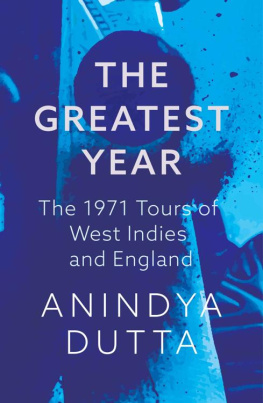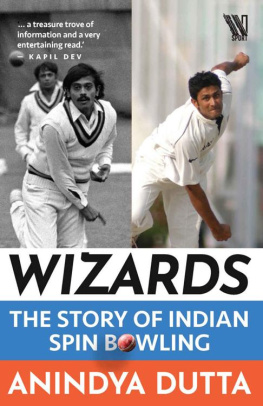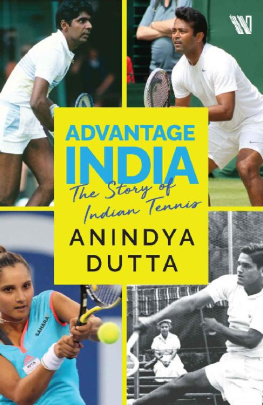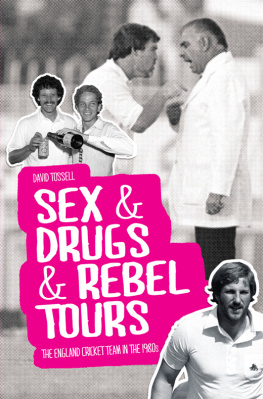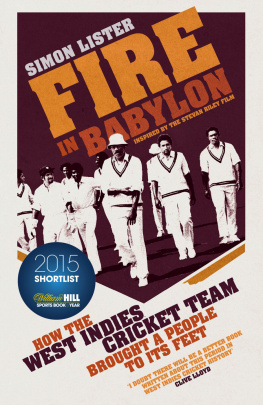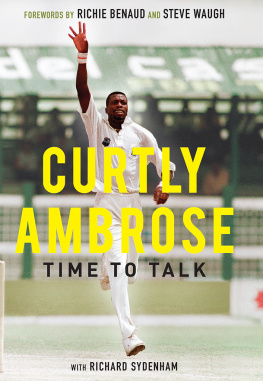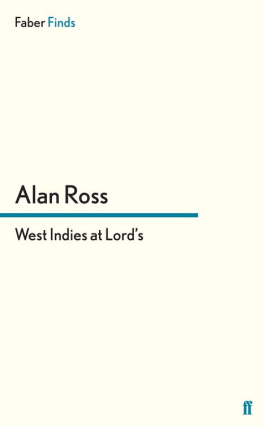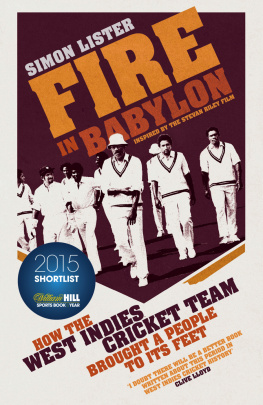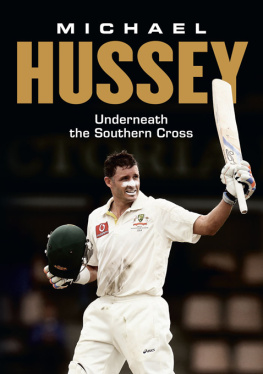First published as an ebook by Westland Publications Private Limited in 2020
1st Floor, A Block, East Wing, Plot No. 40, SP Infocity, Dr MGR Salai, Perungudi, Kandanchavadi, Chennai 600096
Westland and the Westland logo are the trademarks of Westland Publications Private Limited, or its affiliates.
Copyright Anindya Dutta, 2020
The views and opinions expressed in this work are the authors own and the facts are as reported by him, and the publisher is in no way liable for the same.
Cover design Westland Publications Private Limited
All rights reserved
No part of this book may be reproduced, or stored in a retrieval system, or transmitted in any form or by any means, electronic, mechanical, photocopying, recording, or otherwise, without express written permission of the publisher.
To my wife Anisha
for these first 25 years
and
The Greatest Life
I could have hoped for
Introduction
Between February and August 1971, Indian cricket made the unlikely climb to the top of the world.
First, facing up to a West Indies side led by Garry Sobers and boasting of great batsmen like Rohan Kanhai, Clive Lloyd and Roy Fredericks, the perennial whipping boys of cricket achieved results that the teams fans had never imagined in their wildest dreams. Youth and experience blended harmoniously to produce a stunning outcome. Then a few months later, a slightly different group of veterans and youngsters combined to halt the English juggernaut. By the time the Indians left the British Isles, Englands decisive Ashes triumph Down U nder , and a victory over Pakistan earlier that summer, seemed but a dream.
Two away series victories against the greatest teams in the world within months, for a side that had a solitary such win over New Zealand to boast of in the previous four decades of Test cricket, was a result unprecedented in the annals of the sport. It was as if the Gods had ordained that 1971 would be the year when all of Indias efforts of the previous decades would bear fruit in one glorious season of cricket.
Fifty years on, there could be no greater tribute than telling the story of the most magnificent year of cricket ever put on by an Indian team.
Heroes Come Home
So far as I am concerned, Ajit, a great dream has come true.
- Vijay Merchant1
New Delhi, September 1971
As the Air India flight from London taxied its way to the Arrivals building at New Delhis Palam Airport, Ajit Wadekar looked out of the window, deep in thought. How life had changed for him and his boys in the past eight months was almost beyond comprehension.
His unexpected elevation to captaincy and a controversial team selection had set the stage for what he expected would be a difficult time at the helm. But the past months had turned out results that had far exceeded his wildest dreams.
Consistently good cricket, some inspired individual performances, and a gradual build up in self-belief, had transformed the team from the whipping boys of world cricket to unofficial world champions, all in the space of eight months. As in every other success, there had been moments on each tour that, on reflection, had triggered the dramatic change in fortunes. They all played back in his mind as the fields around the airport flashed by the windows of the still decelerating Boeing 747.
Gavaskar, Chandrasekhar, Sardesai, Durani, Prasanna, Abid Ali, Solkar, Bedi, Engineer, Venkatat crucial moments they had all delivered. Catches had been held, partnerships broken, matches saved. And it had been worth it. Here they were, heroes coming home, about to be feted by the Prime Minister of India at her residence.
If the crowd and the reception on the airport tarmac in Delhi took the team by surprise as they walked down the steps from the aircraft, the celebrations at a packed Ferozeshah Kotla were even wilder. And then came the moment they had been waiting for. The experience of being invited home by the Prime Minister of India, and being feted as national heroes, was unique, and something each of them would cherish for the rest of their lives.
While the events at Delhi had been overwhelming, what awaited Wadekar and his boys at Bombay would simply blow them away. Thousands of fans filled every inch of space at the airport, perched on any available piece of masonry. And when the team exited the airport, they found hundreds of thousands of people lining the twenty-kilometre stretch to the Brabourne Stadium. The team members remained standing throughout the ride in a motorcade of specially requisitioned vintage cars, acknowledging the adulation. No team in the history of Indian sports had ever been accorded such a welcome.
By 1971, cricket already had a very special place in the heart of Indian sports fans, and no team in the past four decades had even come close to what Wadekar and his boys had achieved. The West Indies series win earlier that year had brought adulation and widespread praise, but most cynics had put it down as a one-offa sole Test victory against an ordinary pace attack that happened to result in a series win. But to have beaten a rampaging English team at the top of their game in their own backyard, was another matter altogether. A glorious future, no one doubted now, awaited Indian cricket.
Six Decades of Hope
In order to understand the unprecedented reaction of the nation to the achievements of the Ajit Wadekar led team of 1971, one needs to go back to the beginning.
In 1932, when the first Indian Test team led by C.K. Nayudu walked on to the hallowed turf of the Mecca of Cricket, they had surprised the Englishmen with pace. The greater experience of the home team had finally allowed them to recover from the destruction wrought by Mohammad Nissar and Amar Singh, and prevail by 158 runs. When four years later, the visitors lost 0-2 in a three Test series, the scoreline owed as much to captain Vizzys off-field shenanigans as it did to the superiority of the Englishmen.
The 1946 Indian team, the last touring side to England before independence, was one of the most formidable squads to visit England. If the narrow 0-1 loss was an unfair reflection of how well Iftiqar Ali Pataudis side played, there could be little doubt that the 0-3 whitewash the 1952 squad suffered, was well deserved, Vinoo Mankad and Vijay Merchants efforts notwithstanding. But worse was yet to come. In 1959, Datta Gaekwads side earned the ignominy of suffering the worst defeat of any Indian team to England, with a 0-5 whitewash.
If Indian fans imagined that Mansur Ali Khan Pataudis inspiring leadership and the new strategy of employing a spin quartet would change history when the 1967 team landed on British shores, they would be bitterly disappointed. The third successive clean sweep in the series was not only humiliating, but once again raised the question whether India would ever win a single match in England, let alone a series.
The tens of thousands lining the streets of Bombay that September day in 1971, and the millions in cinemas across the country who would watch the News Reel that captured the joy and adulation, were familiar with these travails of past teams. Their celebration of the moment came from deep awareness of the significance of the triumph.
As the motorcade drove up to the gates of Cricket Club of India for the final leg of celebrations, the impact of what they had achieved, finally dawned on the team. They had overcome the weight of four decades of losses on the field, and three centuries of colonialism off it, to finally, decisively, put Indian cricket on a new trajectory.
In fact, their victory had far wider ramifications than they could have imagined then. Indian cricket had crossed its Rubicon that August day at The Oval. It was to trigger events that in just a few short decades, would bring about a dramatic shift in the power centre of the sport from its roots in England.
Next page
